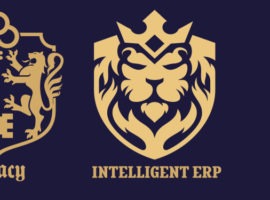Not your father’s ERP: A blueprint for digital transformation
 With an intelligent ERP, a company can embark on a digital transformation strategy to set them up for the future of business – in five steps.
With an intelligent ERP, a company can embark on a digital transformation strategy to set them up for the future of business – in five steps.
If money is the lifeblood of an organization, finance is its heart – and that heart is always racing. Racing to re-evaluate costs, cashflow, and liquidity; racing to adapt to remote and hybrid work; racing to build sustainability into every decision; and, quite honestly, racing to stay ahead of the next round of unknowns.
True, these challenges don’t all fall on finance, but finance is and should be at the center of those changes. And as organizations reflect on lessons learned in the past, they want to see finance chart the course ahead – because it’s your job to transform finance and clear a path for growth.
 With an intelligent ERP, a company can embark on a digital transformation strategy to set them up for the future of business – in five steps.
With an intelligent ERP, a company can embark on a digital transformation strategy to set them up for the future of business – in five steps.
Growing, or at the very least keeping pace with your peers, isn’t something you can do if you do things the way you’ve always done them.
Successful, sustainable businesses build adaptability into their processes, and flexibility into once-rigid requirements. They’ve learned that change is the only way forward and that one-time adjustments are never going to be enough.
As finance leaders, you’re now in charge of continuously transforming finance functions, so you can continuously transform your company.
Take something as fundamental as ERP, for example. It’s there, and it works fine. But what if you somehow had a more intelligent ERP solution – one that’s:
What if your ERP had the capacity to grow as your company grew and was capable of tackling new problems, defining new business models, and adapting to new markets in an instant?
What if you could always be improving – with the speed and flexibility to move your business forward faster?
 ERP has come a long way. Discover how ERP with advanced technologies like cloud, AI and automation can help businesses be more agile, flexible, and productive.
ERP has come a long way. Discover how ERP with advanced technologies like cloud, AI and automation can help businesses be more agile, flexible, and productive.
A growing finance trend is harnessing intelligent technologies to increase productivity and, as mentioned above, speed. So you can grow both quickly and profitably.
According to Deloitte research sponsored by SAP, finance leaders are taking the lead in implementing new tech tools for all elements of financial management. That’s so they can restructure everything from work processes in a decentralized workforce to how they handle changing regulations, vendor relationships, and business travel patterns.
It’s the modernization many finance leaders have been talking about for some time, but now it’s here, and it’s helping organizations make real-time processes and workflows a reality. It’s creating versatile technology infrastructures that can adapt to virtually any challenge.
And it’s closing data and workflow gaps by bringing every critical finance function together in one place with one consistent experience.
It is, in a very real sense, a financial revolution. But it isn’t a one-and-done deal. Constant improvement is the new normal, and every AI, machine learning, automation, or other tool you can use to continually refine your processes is a tool you want in your arsenal.
Because you don’t simply want to be as good as you were yesterday.